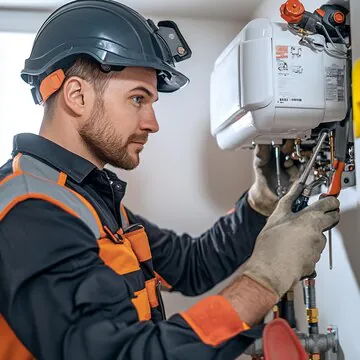When it comes to home comfort, heating systems play a crucial role. With a variety of options available, understanding which heating system is right for your home can be overwhelming. This guide will help you navigate through different heating solutions, their features, benefits, and the services needed to keep them running efficiently.
Table of Contents
- Understanding Heating Systems
- Central Heating Systems
- Local Heating Systems
- Factors to Consider When Choosing a Heating System
- Popular Heating Systems: Pros and Cons
- Essential Heating Services
- Conclusion
Understanding Heating Systems
Heating systems are essential for maintaining a comfortable indoor environment, especially during colder months. They can be broadly categorized into two main types: central heating systems and local heating systems.
Central Heating Systems
Central heating systems distribute heat from a single source throughout your home. This can be achieved through various methods:
- Furnaces: Furnaces are among the most common central heating systems. They can be powered by gas, electricity, or oil and work by blowing heated air through ducts into rooms.
- Boilers: Boilers heat water to produce steam or hot water for heating radiators or underfloor heating. They can also provide hot water for domestic use.
- Heat Pumps: Heat pumps extract heat from the outside air or ground and transfer it indoors. They can provide both heating and cooling, making them versatile options.
Local Heating Systems
Local heating systems are designed to heat individual rooms or areas. They are ideal for homes with specific heating needs or for supplementing central heating:
- Space Heaters: These portable units can be electric, gas, or kerosene. Space heaters are effective for providing quick heat to specific areas, but they should be used with caution due to safety concerns.
- Fireplaces and Wood Stoves: Traditional and modern fireplaces, as well as wood stoves, offer a cozy heating option. They can be fueled by wood, gas, or pellets.
- Radiant Floor Heating: This system involves installing heating elements beneath the floor surface, providing warmth from the ground up. It’s efficient and comfortable, especially in bathrooms and kitchens.
Factors to Consider When Choosing a Heating System
Choosing the right heating system for your home involves several considerations:
1. Climate and Location
The climate in your area significantly affects the type of heating system you need. In colder climates, a robust central heating system may be necessary, while milder regions may benefit from a heat pump or space heater.
2. Home Size and Layout
The size and layout of your home will influence your heating choices. Larger homes may require a central system with ductwork, while smaller homes might efficiently use localized heating solutions.
3. Energy Efficiency
Look for systems with high Energy Efficiency Ratings (EER) or Seasonal Energy Efficiency Ratio (SEER). Higher efficiency systems reduce energy costs and are better for the environment.
4. Fuel Type
Consider the availability of fuel types in your area. Natural gas is often less expensive than electricity, but electric systems can be more convenient and easier to install.
5. Budget
Your budget will play a crucial role in determining which heating system you can afford. Keep in mind the initial installation costs and ongoing maintenance expenses when making your decision.
6. Noise Level
Some heating systems, like furnaces and heat pumps, can produce noise. Consider how noise levels might affect your comfort, especially if the system is located near bedrooms or living areas.
See Also Comparing Different Types of Heating Systems: A Comprehensive Guide
Popular Heating Systems: Pros and Cons
1. Furnaces
Pros:
- Fast heating
- Efficient for larger homes
- Available in gas, electric, and oil options
Cons:
- Requires ductwork
- Can be noisy
- Higher upfront costs for installation
2. Boilers
Pros:
- Even heating
- Can provide hot water for domestic use
- Quiet operation
Cons:
- Slower to heat up compared to furnaces
- Requires regular maintenance
3. Heat Pumps
Pros:
- Dual functionality (heating and cooling)
- Energy-efficient
- Environmentally friendly
Cons:
- Less effective in extremely cold climates
- Higher upfront costs
4. Space Heaters
Pros:
- Portability
- Low initial cost
- Easy to use
Cons:
- Limited heating capacity
- Higher operating costs if used extensively
5. Fireplaces and Wood Stoves
Pros:
- Aesthetic appeal
- Provides cozy ambiance
- Can reduce heating costs when used as a supplement
Cons:
- Requires fuel storage
- Maintenance and cleaning are needed
6. Radiant Floor Heating
Pros:
- Efficient and comfortable
- Invisible heating solution
- Reduces allergens in the air
Cons:
- Higher installation costs
- Slower to heat up
Essential Heating Services
Once you’ve chosen a heating system, maintaining it is crucial for efficiency and longevity. Here are some essential heating services to consider:
1. Installation
Proper installation is key to ensuring your heating system operates efficiently. A professional installer will ensure that your system meets local building codes and performs optimally.
2. Regular Maintenance
Routine maintenance, such as cleaning filters, checking for leaks, and inspecting components, will extend the life of your heating system. Schedule annual maintenance checks with a qualified technician.
3. Repairs
Inevitably, heating systems may require repairs due to wear and tear. Promptly addressing issues can prevent further damage and costly repairs.
4. Emergency Services
Look for service providers that offer emergency repair services. This ensures that you can get help when your heating system fails unexpectedly, especially during cold weather.


0 Comments